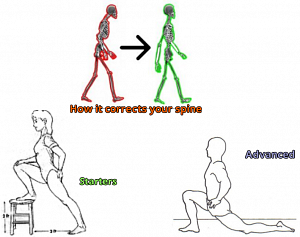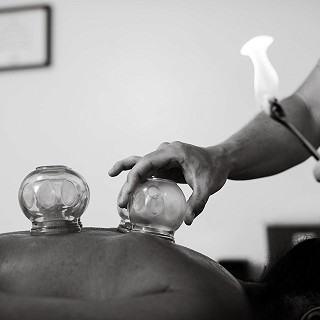Planning for a Year of Achievement
Get back on track in 2015.
The beginning of a new year is the best time to start fresh and get your life moving in the direction you really want. It doesn’t matter how much money you have or make, or whether you are just starting out or have a successful career, by opening yourself up to new possibilities through goal setting, you will start living the life you want.
Many of us set unrealistic New Year’s resolutions. We may have great intentions, but soon give up when the going gets tough and results are not immediate. In our instant gratification world, it is hard to embrace the notion of “delayed gratification” where results take a while to achieve. But goals DO provide clarity and direction in our lives.
Is money really a barrier? Money is often a reason given by many of us for not pursuing our goals in life. However, with some solid saving strategies, good financial planning and a little creativity, it is amazing what you can do. For some of us, changing our job is the first step. Life is too short — and too precious — to stay in a job you don’t enjoy.
Over or under confident? Check in with your feelings. If you are over-confident, you can inadvertently set yourself up for failure by pursuing goals out of your reach. If you lack confidence, you may never fully engage in goal setting and won’t ever reach your full potential.
Redefine how you think. Be consciously aware of how you think and the choices you make. When it comes to goals, think about the short and long term. A short-term goal is something you want to accomplish in a 3-5 year period, like saving money to purchase a home. A long term goal will take more than five years, such as paying off the mortgage.
Define your goals. There are six broad categories of goals: professional, financial, health and wellness, spiritual, emotional, and relationships. A professional goal could be finding a new job or getting a promotion. A financial goal could be saving a particular amount of money. A health and wellness goal could be to lose 10 pounds or drink less coffee or wine. A spiritual goal could be to go to church more often. An emotional goal could be to adopt a more positive attitude. A relationship goal could be to start a family or find a life mate.
As you define your goals for 2015, prioritize what is important and what you can realistically achieve. Set a time frame for achieving your goals and figure out who you might need to help you get there.
Find your soul in your goal. When you pursue a dream only for economic gain or to support your ego, you lessen its value. The satisfaction is fleeting. When you completely attach yourself to a goal, and know that it will fulfill your soul, the satisfaction lasts longer.
Think big, act small. Many of us have heard of the KISS principal (keep it simple stupid). This statement holds true for goal setting. Try not to over complicate your goals. Reflect on past successes in terms of the approach you took and the mindset you embraced. Repeat this formula. And be selective with whom you share your goals. Don’t expect your friends or even your partner to embrace the changes you want to make in your life immediately as they may be uncertain as to how they will fit into your changed life.
Embrace a winning mindset. Motivation is important, but maintaining a winning mindset is critical to success. When you commit your heart to your dream, you will naturally create the energy needed to propel yourself forward. Also, the more you redirect your money toward your goals, the more you will empower yourself to achieve them.
Don’t let money be a barrier to your success. Research shows that 85 per cent of people with financial plans feel more in control of their lives and enjoy greater emotional well-being. So hire a Financial Planner and make a plan! Just to be clear, a Financial Planner will NOT set goals for you — that is your responsibility. What they will do is create a financial plan that will enable you to achieve your goals. They’ll consider all the factors — your risk tolerance, age and financial situation, plus inflation and tax implications — and recommend investments that are right for you.
So as the year draws to an end, don’t feel pressured to make resolutions because you feel you should. Try to set realistic expectations for yourself. Start small, but think big. You’ll be amazed at what you’ll be able to achieve!
Guilt-Free Gingerbread Cookies

Ingredients
- 3 cups spelt flour
- 1/3 cup + 1 T maple syrup
- 1/4 cup blackstrap molasses
- 1 1/2 tsp baking powder
- 3/4 tsp baking soda
- 1/4 tsp salt
- 1/2-1 T ginger (depending on how much kick you like)
- 1 egg
- 2 tsp cinnamon
- 1/4 tsp cloves
- 1/4 tsp nutmeg
- 4 T applesauce
- 2 tsp vanilla extract
Instructions
- Mix the dry ingredients in one bowl. Mix wet in another. Add dry to wet and mix only until combined.
- Remove the dough from the bowl and cut into two equal parts.
- Wrap the dough in plastic and refrigerate for at least 2 hours.
- Preheat oven to 350.
- After two hours, remove the dough from the fridge.
- Roll the dough onto a floured surface until it is about 1/4 inch thick. Please use additional flour if necessary.
- Cut dough into desired shapes and place them onto a lined baking sheet.
- Bake the cookies for about 8 minutes and then let them cool a bit before removing.
- Set them aside to completely cool before decorating.
Enjoy!
Serves: 18
Psoas Standing Stretch

Stretch 1: Runners Stretch
- Kneel on one knee and put one foot in front.
- Transfer your weight onto the front foot and push your hips forward, until you feel a stretch along the front of your hip.
Stretch 2: Table Stretch
- Stand beside a table, bed, arm of a couch, or some surface slightly lower than hip level.
- Lift one leg up onto the table behind you, then sink into the stretch, with your hips square, until you feel a stretch along the front of your hip.





